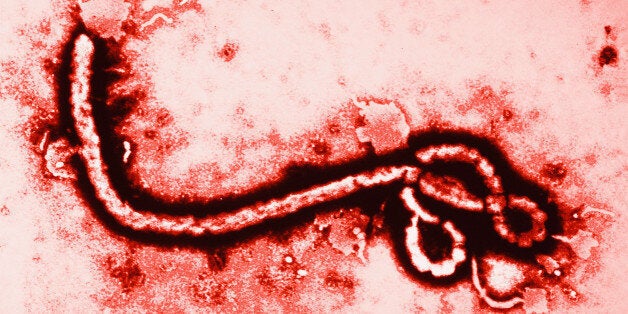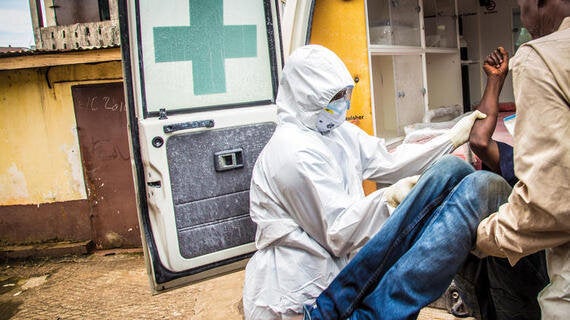

Last week Sierra Leone marked the first anniversary of the declaration of the end of the Ebola outbreak by the World Health Organisation (WHO).
A total of 28,616 confirmed, probable and suspected cases were reported in Guinea, Liberia and Sierra Leone, resulting in 11,310 deaths. Sierra Leone accounted for 14,124 cases and 3,956 confirmed deaths according to the WHO.
Local health workers, as well as international volunteers, fought with great bravery against the epidemic. They risked (and sometimes gave) their own lives in the process. I was honoured to have helped look after two British health workers, infected with Ebola in the course of their duties, on their repatriation to the UK. The bravery of health workers in Sierra Leone, as well as the resilience of the people of Sierra Leone should never be forgotten.
However, at the level of international relations, the epidemic exposed real flaws in the structures of global health governance. A criticism which has regularly been voiced is of the perceived slowness of the WHO response to the epidemic. However, in my view, the problematic nature of the global health response goes far deeper. There are some hard questions that need to be asked. And now, a year on, those hard questions are still far from being asked, let alone answered.
The aim of this brief blog article is to at least pose some of those questions. Before those questions are posed however, it is important to get a few things straight.
Ebola is well recognised as one of the most virulent infectious diseases yet identified. But its high mortality rates are not intrinsic to the jumble of biochemical data contained within its viral-envelope. The unprecedented mortality observed was just as importantly a function of the socioeconomic environment in which the virus was operating. It was Pasteur who said "le microbe n'est rien, c'est le terrain qui est tout".
The epidemic's strain of Ebola was no more "transmissible" than previously recognised Zaire Ebola Virus (ZEBOV) strains. It also followed the same clinical course as previously known strains. Yet it claimed victims on a scale two orders of magnitude greater than previous outbreaks.
Mortality rates of around 70% were observed in West Africa whilst the mortality of repatriated patients in "first-world" setting was around 25%. The proximal reasons for this difference in mortality were due to a combination of factors, including most crucially the provision of basic nursing and supportive care.
Stepping back and taking a wider view however; what processes ultimately determined who had access to a bag of fluids and who did not, or whether adequate "Infection Control" systems were in place? And why had a hitherto parochial and sporadic infection become a sustained international epidemic?
Rudolf Virchow, founder of cellular pathology and public health pioneer, conceptualised the idea of an "artificial epidemic". Outbreaks become epidemics as a result of failures in the underlying political economy.
Too often in the medical community (as well as in the mainstream media) the social aspects of the Ebola epidemic were discussed in a very circumscribed manner. Overwhelming focus had been on issues such as entrenched social practices or local mistrust directed towards health workers. These were real and serious phenomena but they only tell half the story. The suspicion, fatalism and conspiracy theories which emerged amongst some portions of the population in Sierra Leone in the course of the crisis did not arise from nothing. They had roots in recent history. Many in West Africa had hitherto had little contact with comprehensive medical care. And any experience that they had was often of poorly trained health care workers, achieving poor results, working in under-resourced contexts and with a proliferation of profit driven care services (private providers being dominant in most African countries).
In Sierra Leone, on the eve of the epidemic, there were 2 physicians per 100,000 population (compared to, for example, 270 per 100,000 in UK). The maternal mortality rate, a proxy indicator of health system coverage, was one of the worst in Africa with 890 per 100,000 live births (compared to under 10 per 100,000 live births in developed countries).
Combine all of this with the fact that, especially at the start of the epidemic, Ebola treatment centres were often perceived as centres of palliation, isolation and (on occasion) even as amplifiers of disease. Infection control infrastructure was almost non-existent and personal protective equipment for health workers inadequate. The ability of the health service to care for patients with non-Ebola illnesses also suffered a catastrophic break down. Seen in this light the psychological attitudes of the affected populations can be better understood.
But describing the inadequate health care system in these terms can only go so far. The tragedy goes even deeper than this. At a national and international level the reasons for the poor resilience of Sierra Leone's health system was not, as is so often claimed, due to a lack of "political will" in addressing health deficiencies and inequalities. Rather, it seems that there was often substantial "political will" focused on deprioritising access to universal healthcare. Structures of power and economic subordination have directed the evolution of the Sierra Leone health system over the decade since the end of the civil war. The post-war period was overseen by, amongst other actors, Britain's Department for International Development (DfID, the largest bilateral aid donor to Sierra Leone).
Government health spending per capita on the eve of the epidemic in 2014 remained at the level it had been since the end of the civil war more than ten years previously. As a result, in one of the poorest countries in the world, nearly 80% of health care costs were "Out-Of-Pocket"; paid for by patients or their families.
Over the same period (2002 - 2014) Sierra Leone had, year-on-year, enjoyed robust economic growth, significantly above the continents average. Yet, this solid economic performance failed to translate into investments in health. Most revealingly, the "Total Government Spend on Health" as a proportion of both Total Government Spending and as a proportion of Total Health Spend declined over the same period, with the latter figure standing at around 10%. This is far below the levels of about 80% seen in developed countries.
So despite the end of civil war, and in the context of greater integration into the global and regional economy via the involvement of international institutions such as the IMF and DfID, Sierra Leone still had some of the lowest public investment in healthcare in Africa. What we had seen in the run-up to the epidemic was a retreat of the State's role in health since the end of the war, not an increase as should have been expected.
At the same time, the Sierra Leone government was risking its future ability to invest in public infrastructure. In 2012 alone its policy (encouraged by DfID) of tax incentives for foreign mining corporations and other businesses resulted in a loss of tax revenues equivalent to more than 8 times that year's health budget. This mirrored a wider regional problem; the WHO's initially stated figure of $1bn needed to control the Ebola epidemic was dwarfed by the yearly net loss of around $58bn dollars in evaded tax and capital flows from Africa to First-World countries.
Professor Paul Farmer, an internationally recognised authority on sustainable health development, has rightly pointed out that the Ebola crisis should serve as a "rebuke to those that tolerate anaemic state funding of, or even cutbacks in, public health and healthcare delivery".
The tragedy of the epidemic was that it had predictably localised to countries where economic development is chiefly geared towards the extraction of profit and where health governance has focused on "minimum care packages", "cost effectiveness" and vertical donor-dominated models of care.
And these strategies have been at the expense of any establishment of publicly-funded, publicly-provided health systems which are committed, capable and adequately financed.
The Ebola crisis should have prompted a far-reaching interrogation of the whole model of health provision in Africa. This epidemic should have been a "Never-Event". It signified a negligence at the heart of a currently dominant health governance model which is beholden to an economic ideology which generates ever deepening inequality and a hollowing out the public sphere.
The decades-old assumptions at the heart of our very own Department for International Development (DfID), as well as the Sierra Leone Government, and the IMF were instrumental in unthinkingly and blindly preparing the conditions which allowed the Ebola epidemic to flourish.
This negligence must be faced up to, and it must be faced up to for a reason: the conditions which gave rise to the unprecedented spread of Ebola remain exactly as they were. Neoliberal modes of thought and practice which have infected international health governance need to be jetissoned... or it's only a matter of time before history repeats itself.